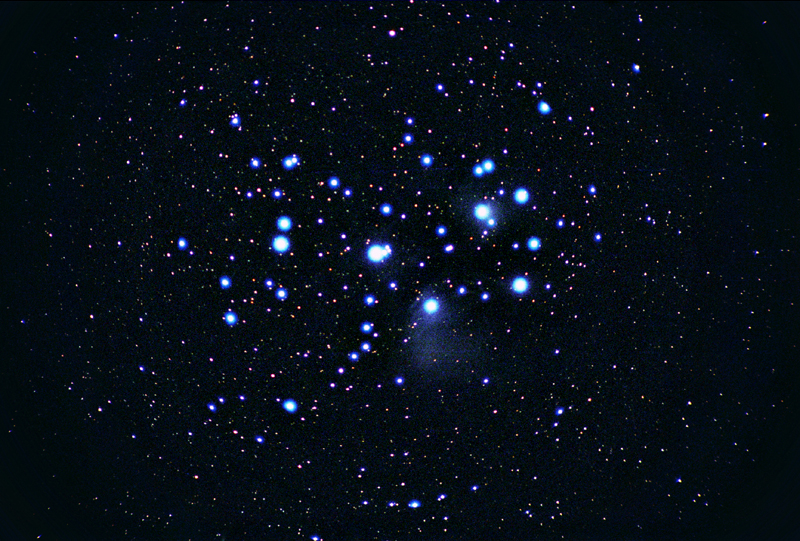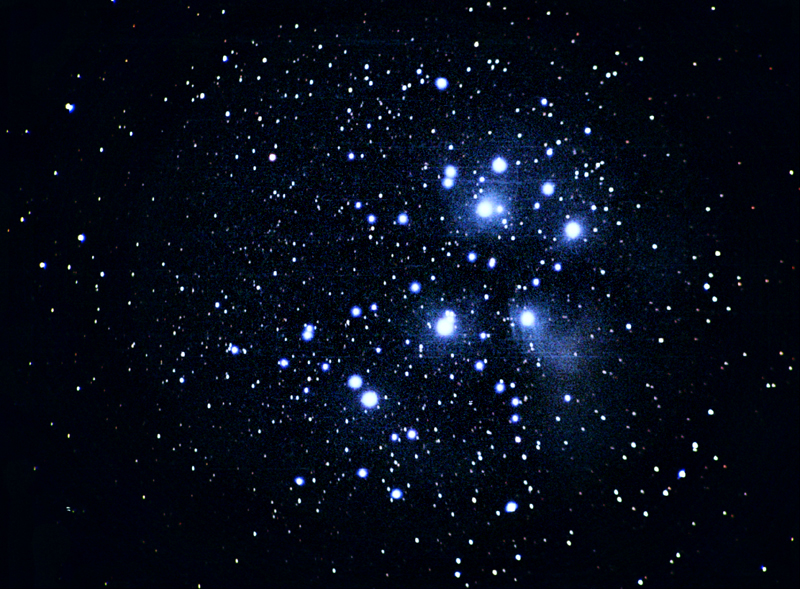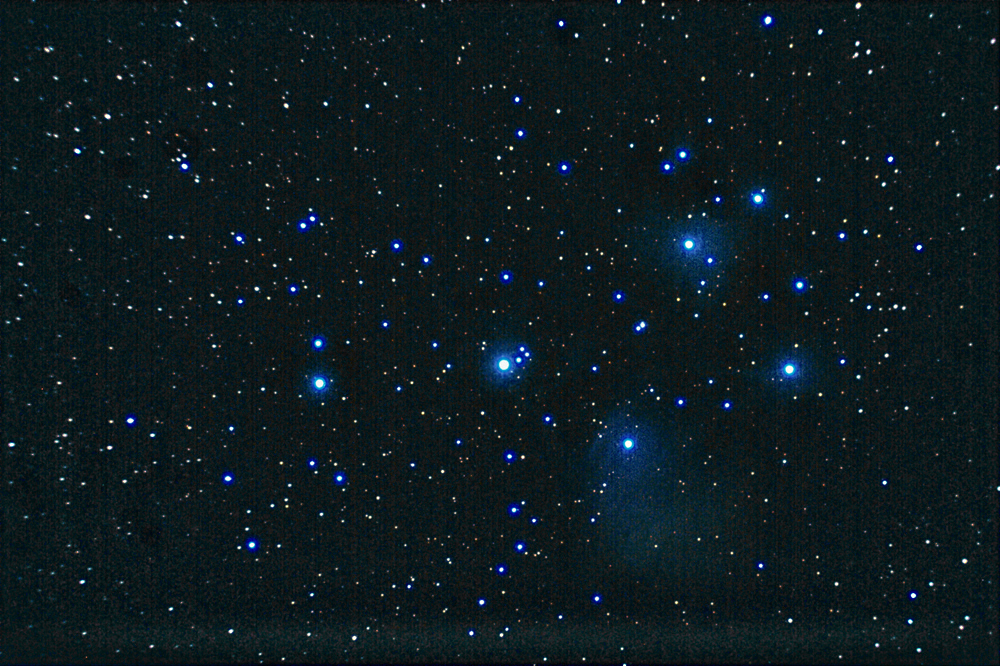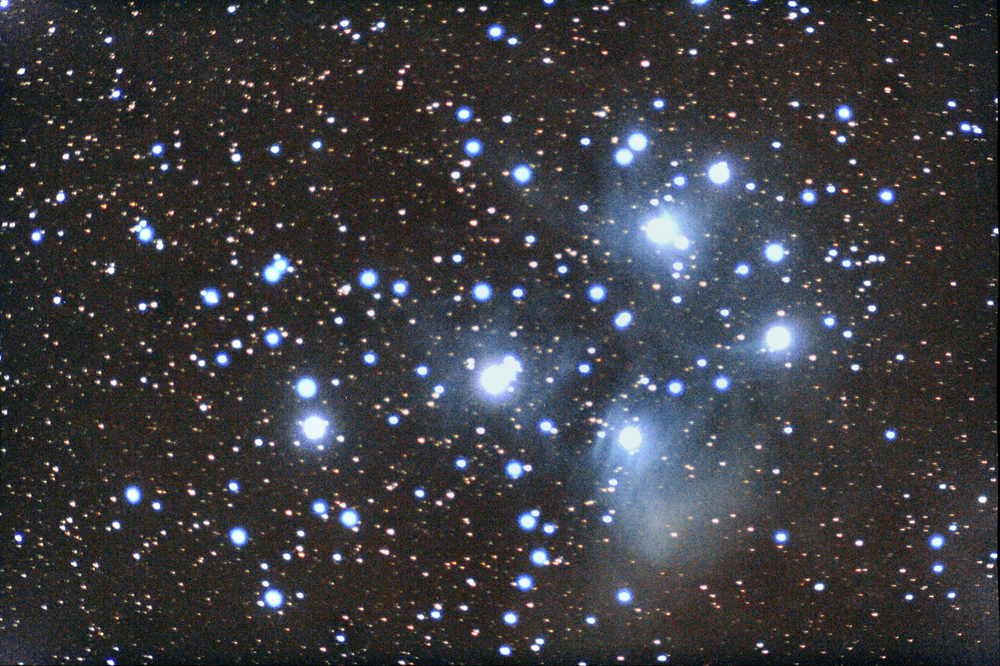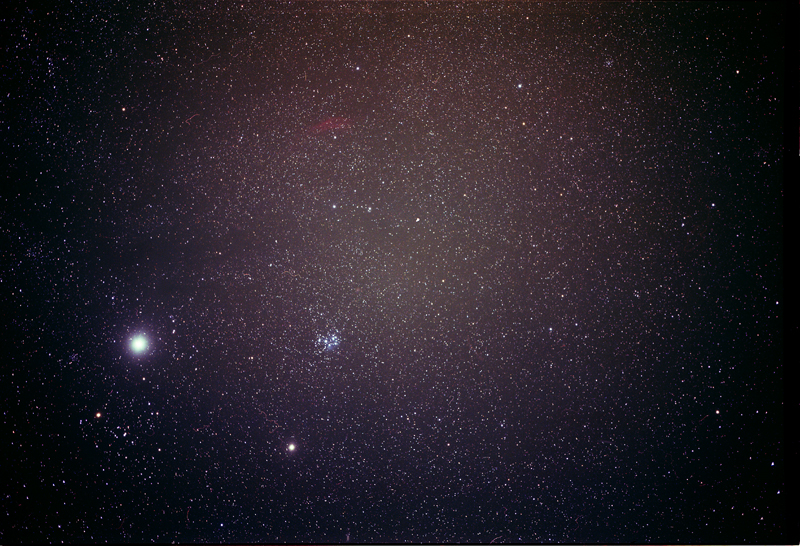
30 minutes exposure, Kodak Ektachrome 400 slide film.
100mm f/2.8 Pentax lens.
| Object Type | Open Cluster |
| Constellation | Taurus |
| Magnitude | 1.2 |
| Size | 100.0' x 100.0' |
M45, known as the Pleiades, or Seven Sisters, are probably the most famous of all open clusters. Under average skies, about 6 stars will usually be visible to the naked eye. However under dark skies, keen sighted observers can see as many as 15. Binoculars will reveal dozens more, while the total number is believed to be over 1000. The brightest stars are all blue main sequence stars which are imbedded in faint nebulosity. The brightest portion surrounds the star Merope, and can be seen without much difficulty in a 6" telescope if the skies are dark.
Curiously, the cluster has no NGC or IC number. Very strange for such an obvious object.

This is a wide angle photograph of the Pleiades region. The Pleiades are close to the centre of the photograph. Above the Pleiades is the California Nebula, NGC 1499, while near the lower left-hand edge is the "V" shaped Hyades cluster. The very bright object above the Hyades is the planet Jupiter. Below the Pleiades is another bright object. This is the planet Saturn. Towards the upper right edge is the open cluster M34, and about 1/3 of the distance from this cluster towards the California Nebula is the bright blue star Algol.
